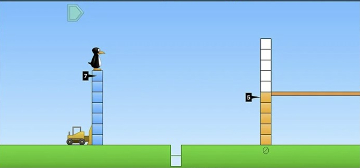ST Math is an online program for pre-kindergarten through eighth grade that supplements your math curriculum. It relies heavily on spatial reasoning applied in puzzle-type activities, along with problem-solving skills. The program provides work with the most important concepts for each grade level based on state standards. It helps children with both math concepts and the mastery of math facts, albeit in an untraditional manner.
Free homeschool accounts, available until June 30, 2022, can accommodate up to 10 students each. Initially, you will identify a student’s grade level, but if your student finds a level too easy or too difficult, you can easily switch them to another grade level from the dashboard. After you create a student account, you will see a lengthy list of “Journey Objectives” on the student’s dashboard. Above that list, it shows the total number of objectives and the total number of puzzles for that level. For instance, the dashboard for a first-grade student that I set up has 26 objectives and 3,389 puzzles.
The first objective for all of the levels up through third grade is titled Intro to ST Math. These first lessons introduce students to JiJi, the penguin who will accompany them through the program. It also introduces the online tools students will use to do things such as dragging or clicking on items and scrolling across the screen for the next activity. In every activity, the student is trying to clear a path for JiJi by solving puzzles. The puzzles often use a similar strategy, such as filling holes in a path so that JiJi can proceed, but the ways that the holes are filled vary. Concepts often build one upon another, gradually increasing in difficulty. As the levels progress, students more frequently enter numbers rather than move objects.
Explanation of how the program works is minimal, and there are no voiceover prompts. The only audio is a delicate “ding” when the path is clear for JiJi. The ST Math website explains why they've chosen to use visual instruction without words:
[W]ith visual learning, students are better equipped to tackle unfamiliar math problems, recognize patterns, and build conceptual understanding. Without language barriers, the problem is accessible to all students, regardless of skill level or language background.
Some children will find the program intuitive while others are likely to find it confusing. There are no instructions or hints for each type of puzzle, and it often takes trial and error to figure out what to do. I think the problem-solving aspect of this is useful to some extent, but some children will find it frustrating.
The program frequently shows visual representations of math concepts by moving groups of circles to show addition, forming arrays of blocks for multiplication, etc. For instance, the student selects 15 as a multiple of 5, then the program aligns fifteen blocks into an array that is five blocks wide and three in height. The visual reinforcement will be useful for some children, while for others it will be a waste of time.
ST Math should be very helpful for some concepts. For instance, the puzzles for working on prime numbers and factors include some in which the student identifies a number such as 10 as either composite or prime. Then the student identifies two factors of 10. Next, the student tells whether each of those factors is a prime or composite number. There might be three or more layers of factoring since they have to continue until they have arrived at all of the prime factors. This process uses visual aids to help students work through factoring. This is the sort of activity that can be tedious when a teacher tries to work with a child, but the puzzle format makes it more enjoyable.
While ST Math probably has activities for almost every concept a child might learn for their grade level, students should also be working with another program or resource that uses other methods of instruction, including writing out problems with pencil and paper.
Puzzles on Try ST Math
ST Math also makes many of their puzzles available for free on a page titled Try ST Math. You can select a grade level, then a topic under that grade level. Each topic usually has four or more levels that are set up in a scaffolding progression, with concepts gradually building one upon another. Students who have not yet worked with the program will have to figure out how to do the activities, but the setup is easier to figure out than in the complete program. The puzzles also let students experience the visual nature of the program to see how well it works for them. This is a great place to start if you want to investigate the program before signing up.








